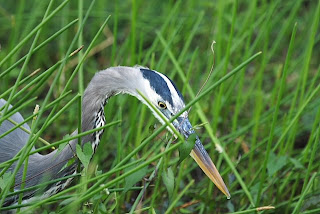




Everglades National Park was created in 1947 to protect the southern end of the Everglades ecosystem, a wildlife-rich wilderness threatened by the growth of the human population of South Florida. Although most of the 1.5 million-acre park is remote and difficult to explore, it contains extensive hiking paths, boardwalks and canoe trails. Among the most famous is the Anhinga Trail, a boardwalk from which it's possible to look down at the struggle for food and life among alligators, wading birds, turtles and snakes. A 15-mile paved loop at Shark Valley allows people to walk, bicycle or ride a tram through the heart of the sawgrass marsh, with the chance to see alligators, deer and wading birds.
The park's beauties are subtler than the glaciers, mountain ranges, grizzly bears and buffalo herds of some of the showier national parks. The park incorporates a wide variety of habitats, the sawgrass marshes of the classic Everglades, mangroves shorelines, marl prairie, hardwood hammock and pinelands. The park also encompasses Florida Bay. Along the southern coast of the park live American crocodiles, part of the only population in the United States. The park's creation marked a milestone in the history of American conservation. For the first time, according to the National Park Service, "a large tract of wilderness was permanently protected not for its scenic value, but for the benefit of the unique diversity of life it sustained."
Among the species found at the park are the alligator, smooth-billed ani, manatee, Florida panther, American white pelican, roseate spoonbill and wood stork. Extending to the very tip of the Florida peninsula, the park occupies portions of Collier, Miami-Dade and Monroe counties. The only highway through the park is State Road 9336. The park receives more than 1 million visitors a year. The park faces several threats. A row of rock mines blasts and digs for limestone on its eastern border. Several non-native species have taken hold in the park, including a breeding population of Burmese pythons. The park's managers are working on a plan to stop boat propellers from tearing up seagrass on the floor of shallow Florida Bay, a delicate issue that risks angering people who fish in the bay. And most important, the historic flow of water into the park from the north has been disrupted. The land encompassed by the park forms the southern end of an ecosystem that was once dominated by the slow flow of shallow water from Lake Okeechobee. An elaborate drainage and water-supply system constructed gradually over the past century has altered the flow of water, flooding some areas and parching others.
The federal government has established several programs to restore the park and the larger ecosystem that surrounds it. A key element involves ripping out levees to increase the flow of fresh water into the park. Among the issues to be determined is whether to raise several miles of Tamiami Trail to allow water and wildlife to pass underneath.
SunSentinel.com
Everglades Video (National Geographic)

















































